Learn more about displaying a combatant’s class slots and equipped classes in your HUDs (and other UI).
This documentation focuses on listing a combatant’s class slots and their equipped classes in a HUD. The actual class is displayed via the class’s Shortcut UI setup, see the HUD shortcut documentation for details.
Unity UI #
The Unity UI module displays class slots and their classes using HUD components.
Display text content information (e.g. name, values, etc.) using ORK HUD Status Text Content components (Class status type, see the HUD text content documentation for details). You can also display information of the class slot via the Class status type. Additionally, the Status Value status type displays the class’s experience (if the class uses status development).
You can also display numerical information via value bars using ORK HUD Value Bar Content or ORK HUD Icon Bar Content components, e.g. the Status Value value type to display the class experience (see the HUD value bar content documentation for details).
HUD Class Slot List #
Use a HUD Class Slot List component to add a combatant’s class slots and their classes. You can either display all class slots of the combatant or only defined class slots .
The component creates a class slot using the Shortcut UI setup of it’s class, or a defined prefab for an empty slot.
The prefab (coming from class’s shortcut UI or a defined prefab) requires a HUD Content Provider component at it’s root. The HUD Class Slot List component sets the content provider’s user (content) as the individual class slot or class. The content provider further distributes the information to any content component on it.
You can use layout components to arrange the listed class slots. E.g. use a Vertical Layout Group component to arrange the class slots in a vertical list. See Unity’s documentation on UI setup and layout groups for details on this.
The context menu in the scene hierarchy has quick setup commands for class slot lists: ORK Framework > HUD > Class > Class Slot List (variants with and without layout groups)
The HUD Class Slot List component requires a combatant as displayed content.
HUD Class Slot (Content Provider) #
Use a HUD Class Slot (Content Provider) component to display a single, defined class slot of a combatant. The component itself is a HUD Content Provider and doesn’t create a prefab of the displayed status value.
Use this component if you don’t want to go through prefab creation and Shortcut UI setup and just display a class slot’s content directly. Displaying the content uses ORK HUD Status Text Content and ORK HUD Value/Icon Bar Content components, which reference the HUD Class Slot (Content Provider) component as their content provider.
The context menu in the scene hierarchy has quick setup commands for single status values: ORK Framework > HUD > Class > Class Slot (single)
The HUD Class Slot (Content Provider) component requires a combatant as displayed content.





